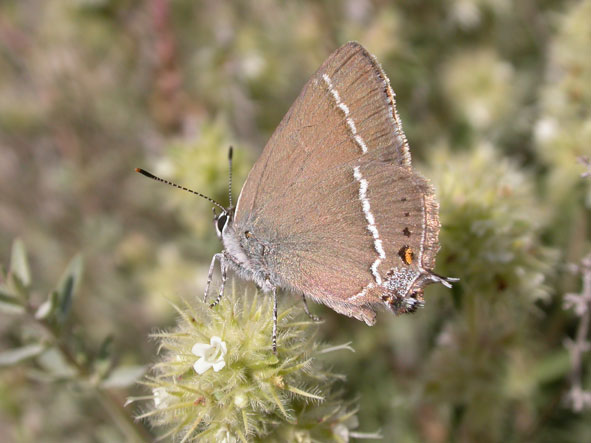In search of endemic Wildflowers and Alpine Accentors.
 |
| Alpine Accentor (Acentor Alpino / Prunella modularis). |
 |
| Linaria glacialis. |
On a rocky ledge the first plants were seen and these included Arabis alpina, Polystichum lonchitis, Blue Dream's (Chaenorrhinum glareosum), Arenaria imbricata and Jasion crispa amethystina.
We then moved on upwards slowly picking up Northern Wheatear (Collalba Gris / Oenanthe oenanthe), Crag Martin (Avión Roquero / Ptyonoprogne rupestris) and Raven (Cuervo / Corvus corax) on the way.
More Alpine Accentor's were seen near the refuge above Laguna de Aguas Verdes, several Spanish Ibex (Cabra montés / Capra pyrenaica) were feeding around the Lagoon.
We then started the walk out to Laguna de Rio Seco where we were to have our lunch but that was some way off.
Just as we started down the first and pretty much the only slope on this walk we started to find new plants including Mediterranean Kidney Vetch (Anthyllis vulneraria), House Leek (Sempervivum vicentei ssp lainzii), Ranunculus acetosellifolius, Potentilla nevadensis, Reseda complicata and Sierra Nevada Violet (Viola crassiuscula).
 |
| Artemisia granatensis. |
Lunch was taken beside the Laguna and then a search was made by Juan of the steep scree slopes whilst I spent some time checking out the rocky and damp areas around the water. Ranunculus demissus and acetosellifolius were in the damper flushes along with carpets of Plantago nivalis.
On the drier areas Galium pyrenaicum, Arenaria pungens, Armeria splendens subsp splendens, Sideritis glacialis and Coincya orofila subsp nevadensis were all found.
Juan then called me up to a rock mass amongst some very unstable scree which I eventually crossed and was rewarded with several plants of the very rare Artemisia granatensis, a plant which has become rare mainly through over collecting in the passed.
The climbing on the scree had just about finished my ankles so instead of going back down I headed up to the path and started to walk ahead whilst Juan went down for Beatriz.
They eventually caught me up after a short rain shower had forced me to shelter behind some rocks. We continued the return journey picking up Sedum anglicum subsp melanantherum, Ptilotrichum spinosum and Eryngiun glaciale.
Juan then called me up to a rock mass amongst some very unstable scree which I eventually crossed and was rewarded with several plants of the very rare Artemisia granatensis, a plant which has become rare mainly through over collecting in the passed.
The climbing on the scree had just about finished my ankles so instead of going back down I headed up to the path and started to walk ahead whilst Juan went down for Beatriz.
 |
| Ranunculus acetosellifolius. |
 |
| Plantago nivalis. |
 |
| Blue Dream's (Chaenorrhinum glareosum). |






,-Eublemma-parva.jpg)

































 Whilst driving towards Granada on the A92 a flock of 17
Whilst driving towards Granada on the A92 a flock of 17 



